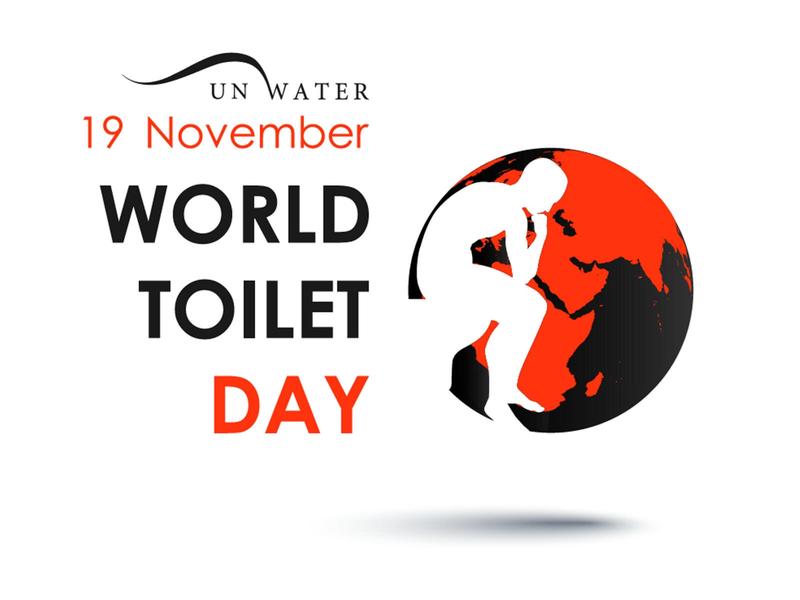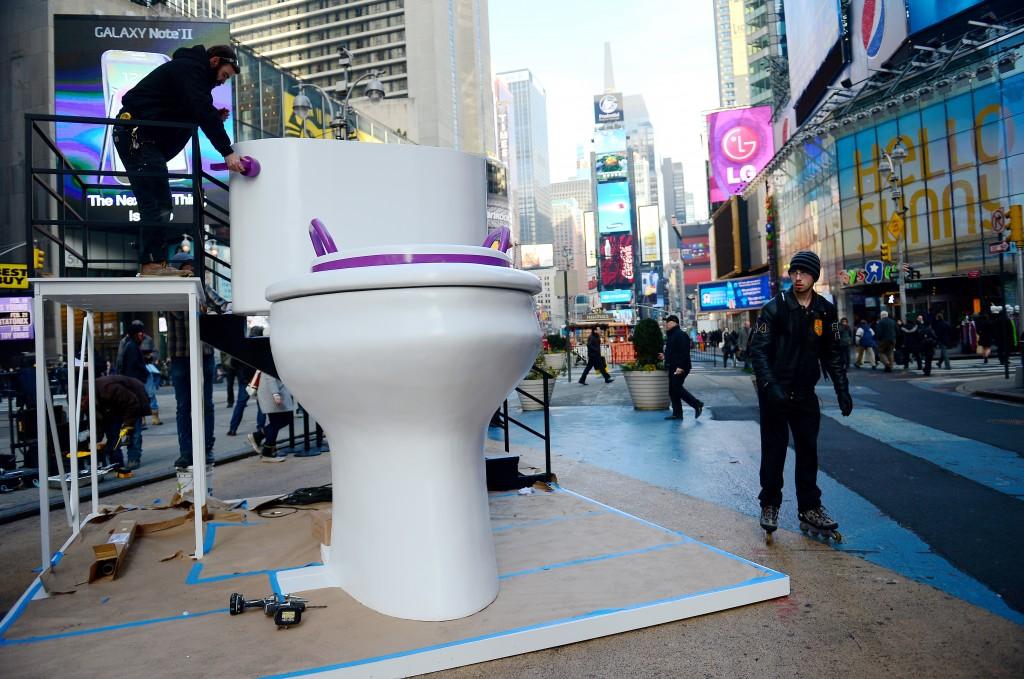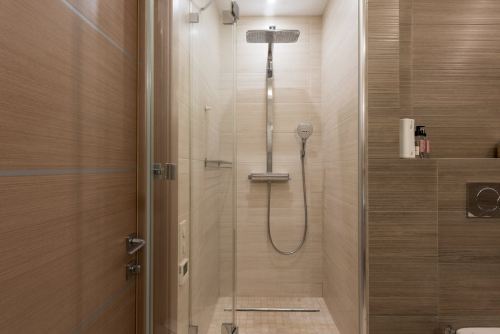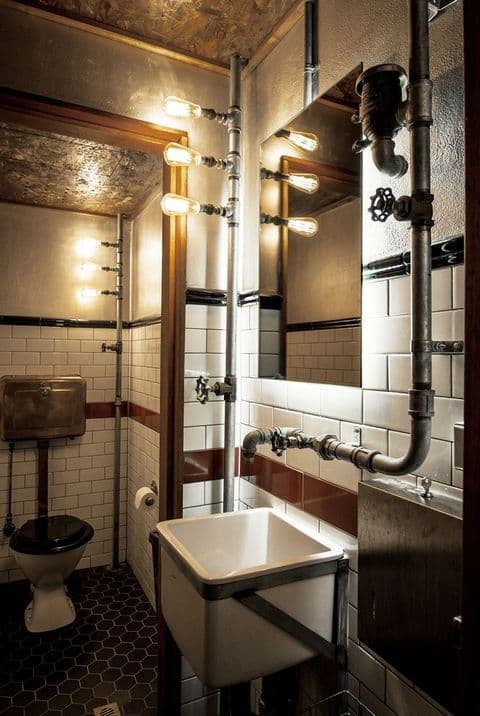World Toilet Day innovations
Local entrepreneurs adopt sanitation solutions for South Africa
World Toilet Day, marked on 19 November annually, may seem like a strange event, considering that some of the earliest water-borne sanitation systems emerged nearly 5 000 years ago during the the Roman and Indian civilisations.
One of the first flushable, in-house toilets made its appearance in 1596, when Sir John Harington developed a new royal “throne” for Queen Elizabeth 1 of England. It needed a whopping 28 litres of water per flush.
Nearly two centuries later, Scottish inventor Alexander Cumming developed a revolutionary S-shaped pipe that trapped a small volume of water behind the toilet bowl to prevent smelly sewer gases from circulating around homes.
Then, in the late-19th century, English plumbing innovator Thomas Crapper took things a step further by developing a ballcock device that is still widely used to fill our toilet cisterns automatically.
And yet, says the United Nations, nearly half the world’s population — 3.6-billion people — still live without a safely managed sanitation service.
Closer to home, far too many South Africans also lack access to dignified toilet systems, largely due to funding, engineering and environmental challenges associated with water-borne sanitation in remote areas or unplanned settlements.
Dry sanitation such as pit toilets offers an alternative to waterborne sanitation solutions, but it still suffers from user acceptance issues and is widely associated with the tragic death of learners Michael Komape and Lumka Mkethwa.
To help overcome some of these issues, the Water Research Commission (WRC) has developed a national innovation platform to fast-track emerging sanitation technologies in South Africa by fostering local manufacturing and commercialisation.
Known as the South African Sanitation Technology Enterprise Programme (SASTEP), it aims to support and empower sanitation innovators and commercial entrepreneurs to move ideas into the marketplace.
Three such projects supported by the WRC include the work of Gauteng-based sanitation entrepreneurs Mark La Trobe of the Enviro Loo group, Lehlohonolo Mandlazi of the Racing Heart Group and Dr Gunter Rencken of WEC Projects.
While all three projects provide water-borne sanitation, a critical objective is to reduce the wasteful use of flushing water in a nation ranked among the 30 driest countries in the world.
Clear water
The first innovation project, the Clear water recirculation toilet system, was designed in China — one of several projects developed under the global umbrella of the Bill & Melinda Gates Foundation’s Reinvent the Toilet Challenge.
In a nutshell, the Clear water system uses a closed-circuit system that recycles the toilet blackwater to a suitable standard for flushingtoilets, while also killing harmful pathogens by means of a natural, organic process.
Mark La Trobe, chief operations officer of the Enviro Loo group in Mogale City (Krugersdorp), was invited to Beijing in 2018 as a potential manufacturing partner for new toilet systems developed under the Reinvent the Toilet Challenge.
“We managed to get exclusive manufacturing rights for South Africa for the Clear water system and have been evaluating the technology for the last 15 months under South African conditions,” he says.
Enviro Loo aims to go into full production in January 2022 for both the local and SADC market, using 100% locally-sourced components.
“Because it offers massive advantages in water-saving, we think the Clear system will be ideal for schools, clinics, informal settlements and individual households,” says La Trobe.
As the system can be powered by solar panels or batteries and does not depend on municipal sewer lines, the system is also ideal for off-the-grid areas.
“Although the recycled water for flushing cannot be used for drinking or hand-washing, it is clear, odourless and non-staining,” he notes.
Solid waste in the blackwater (including paper, sanitary pads, etc,) is cut up in a macerator and fed to a separate storage tank before the blackwater is passed through a series of initial purification processes prior to the major cleaning process in a membrane biological reactor and ozonation.
It also makes use of bacteria in a closed-circuit tank to biodegrade the organic pollutants. La Trobe recommends that the system is desludged after 18-30 months, and believes the technology will help to transform the lives of many by providing an off-the-grid recycling solution that is cost-effective and sustainable. It will also provide a dignified sanitation system that does not rely on reliable municipal water supply to operate.
In line with the Enviro Loo philosophy of empowerment through job creation, the contractors, servicing, and janitorial staff will be sourced as much as possible from local communities.
Racing Heart
In a second project driven by the Racing Heart Group, business partners Lehlohonolo Mandlazi and Mxolisi Ngwane have already produced nearly 150 new-generation sanitation units under the “Dignified Hygienic Water-Borne Sanitation for All” brand.
The duo’s sanitation system used by the two Soweto-born businessmen requires only four litres per flush, making use of household grey water that is stored in a 50-litre wall-mounted tank. The grey water can also be supplemented via rainwater harvesting.
Mandlazi and Ngwane combined their skills to form Racing Heart, a name drawn partly from Mandlazi’s youthful interest in horse racing, as well as his desire “to restore dignity to my people, in a hurry”.
Because the biological treatment system is compact and modular, it can be installed in cramped informal settlements where construction access can be difficult, compounded by the lack of municipal services.
They have already installed several demonstration units in informal settlements in Diepkloof and Orlando, which are serviced only by water tankers.
The toilets discharge into a prefabricated plastic septic tank, where the wastewater is biodegraded by bacterial processes and then filtered with activated ceramics technology before the water soaks away into the soil.
“We are still a young company — only eight years old — and we have partnered with an injection-moulding company to produce the plastic bio-separator tanks

“Our main objective is to restore dignity to the poor, especially women and children. The system can be located in tight spaces, so that residents don’t have to walk long distances to a communal pit latrine or chemical latrine at night, when they are vulnerable to being harassed.”
Mandlazi says the system is very low maintenance, with cleaning of the containment tank only necessary after 24 months.
“There is no need for constant honey-sucking or servicing with chemicals. We think it provides a very sustainable and affordable solution to eradicate bucket, chemical and pit latrines.”
Another innovation to the toilet cubicle is an adaptable double-seat to prevent young children falling through the pedestal.
“Because the bio-separator is underground and incorporates an exterior vent valve, there is also no smell problem in the cubicles — unlike chemical or pit toilets. We believe it is one of the most dignified, affordable, safe, hygienic solutions available on the market,” says Mandlazi.
NEWgenerator
A third WRC-supported project is the NEWgenerator system that was developed by the University of South Florida as an off-grid sanitation system to turn sewage wastewater into clean water, energy and nutrients.
Dr Gunter Rencken, technical director for the Diepsloot-based group WEC Projects, says his company was chosen as an industrial manufacturing partner to further test theNEWgenerator system, with the intention of commercialising the technology for roll-out throughout South Africa.
“This is a particularly exciting system that we predict will help address a number of critical social challenges facing the country, including sanitation, access to water, energy independence and improved food production.”
Though the system has already been tested extensively in India and then for 524 days in a Durban informal settlement, Rencken’s company is planning further trials in Slovoville, Soweto, over the coming months.
The major advantage of the system developed by the University of South Florida is that it can recycle as much as 95% of the blackwater to flush toilets with clean and odourless water.
The purification system incorporates anaerobic digestion and ultra-filtration with advanced membrane technology.
While the system is also designed to recover methane gas for domestic heating (as well as nitrogen and phosphates for crop fertilisation), Rencken says the main objective is to use water efficiently through closed-loop recycling.
WEC Projects has also obtained a licence to make and sell the technology throughout the SADC region, and is supported by the WRC due to its extensive engineering and project management experience.
Rencken says the objective is to adapt the technology to local conditions, drive down manufacturing costs and empower local vendors through franchise agreements for mass production.
“The vision for WEC Projects is to roll out thousands of these units. If it’s viable, our company will not be able to service the whole market — but it is also vital that the communities that use the systems fully support the technology and take ownership of it,” says Rencken.
In order to chlorinate and recycle the water (and to provide lighting) the compact waste-water treatment systems are solar-powered.
“A unique feature of NEWgeneratorTM is that it can operate independently of the power grid, using solar power to operate, or it can be hooked up to a generator. This makes it particularly suitable for use in South Africa where the country’s unreliable power grid, prone to loadshedding and unscheduled outages, has had an adverse effect on existing infrastructure and equipment, often leaving even developed urban areas without power or access to water for prolonged periods.”
Its modular and portable design also means it can be installed in a standard shipping container, moved to the site and brought online with minimal effort, easing logistical problems and ensuring a quick setup.
With the support ofSASTEP, which is hinged on the formation of collaborative partnerships with sanitation innovators and entrepreneurs to ensure the translation of suitable and appropriate sanitation technologies to the marketplace, these and many more innovators are set to lead South Africa towards a truly sustainable sanitation future.
For more information, visithttps://www.sastep.org.za
Who cares about sanitation service delivery in informal settlements?
According to the United Nations, 68% of the world population will be urban dwellers by 2050. The urban-rural migration trend is driven by search for jobs and opportunities. Ironically, the destination of these internal migrants is often the unplanned and ever-mushrooming informal settlements on the fringes of big cities such as Johannesburg and Cape Town.
The trend is not unique to South Africa; it is a global phenomenon. An estimated 25% of the world’s urban population live in informal settlements and according to the 2019 General Household Survey, by Statistics SA, 12.7% of South African households live in informal dwellings, with the percentage increasing to about 20% in Gauteng and the Western Cape. Informal settlements by nature are transient, standing on land that is usually illegally occupied and where permanent structures are not permitted.
The landmark Grootboom Constitutional Court case judgement of October 2000, as well as legislation such as the Bill of Rights and the Water Services Act mandate that government provides a “prescribed minimum standard of services necessary for the safe, hygienic and adequate collection, removal, disposal or purification of human excreta, domestic wastewater and sewage from households”. This includes informal dwellings, with local governments charged with delivering these services.
However, the make-shift nature of informal dwellings makes the provision of services challenging and expensive compared to formal dwellings. The available tools are often inadequate to ensure good service delivery and the means of delivery are usually unsustainable. For example, in larger metros, the prevalent method of delivering water supply and sanitation services to homes is through bulk water supply and sewer networks, which work well in formal dwellings but are impractical in many informal settlements, which are usually situated in areas with difficult topography and are unplanned.
Traditional bulk services in these areas are cost-prohibitive and, in some cases, impractical. Even onsite sanitation solutions such as the ventilated pit latrine (VIP) are not possible due to concerns around possible groundwater contamination as well the prohibition of erecting permanent structures. Potable water supply is usually met with periodic supply via water tankers and sanitation service via chemical toilets. These options are often not properly specified, built, or properly managed and in many instances not desired by the end-users. This perpetuates and reinforces the cycle of poverty and in many cases, promotes open defecation, with adverse impact on health of the community and the environment. There is clearly an urgent need for a full suite of solutions to address service delivery in informal settlements.
Several studies have highlighted the impact of poor service delivery in informal settlements on the surrounding environment. Rivers close to informal settlements are often polluted by sanitation wastes. A study sampled the Umlaas River at points upstream and downstream of the Umlazi informal community. The test results showed a marked increase in physical and chemical parameters such as pH, E-coli, COD, turbidity, electrical conductivity, nitrate, and phosphorous concentration. Furthermore, South Africa has committed to achieving the Sustainable Development Goals (SDGs), which includes tackling sanitation issues and achieving Sustainable Development Goal 6 — water and sanitation for all — by 2030. It is unlikely this goal will be achieved given the water and sanitation services backlog.
Recent advances in water and sanitation research and the convergence of matured sanitation innovation and technologies offer opportunities to tackle these challenges. Next-generation sanitation solutions such as Non Sewered Sanitation Systems (NSSS) provide the means to safely collect and treat human excreta with minimal impact on the environment. NSSS are essentially prefabricated integrated treatment units with two main components: a front-end component (toilet facility) and a back-end component (treatment facility). The NSSS collects, conveys, and treats the specific input within the system, to allow for safe reuse or disposal of the generated solid, liquid, and gaseous output. NSS Systems operate without connection to any sewer or drainage network. The prefabricated components of NSSS require minimal work to be integrated and quickly provide fully functioning sanitation systems.
This means they can be deployed quickly and easily at informal dwelling sites, and as they do not constitute permanent structures they can be removed and relocated to a different site should the informal dwelling be dismantled. As with other innovative solutions, several key enabling factors need to be established to ensure uptake and adoption. These include enabling policies, regulation, standards and end-user education and awareness.
The National Sanitation Policy (2016) does support new thinking about sanitation management, and contains language concerning “adoption of innovation, and more appropriate ways of treating human excreta, and use of sanitation as a resource”. However, more proactive steps are needed to provide clearer guidance, direction and support to municipal officials at the coalface of service delivery at informal settlements. While the policy contains the right intentions, there is a disjuncture between regulation and practice. Lack of awareness of these new developments and innovation often results in local regulators either delaying projects or outright refusing to provide regulatory approvals for such systems.
The national standard, SANS 30500 offers a valuable tool to policy makers and regulators. SANS 30500 (titled: Non-Sewered sanitation systems — Prefabricated integrated treatment units —General safety and performance requirements for design and testing) is a standard published by the South African Bureau of Standards (SABS), which ensures NSSS technologies meet the required quality and safety standards. NSSS technologies that conform to SANS 30500 ensure inputs into the system such as urine, menstrual blood, bile, flushing water, anal cleansing water, toilet paper and other bodily fluids/solids are adequately treated within the system with no need for secondary treatment and the output can be safely discharged with no adverse effect on the environment. The standard specifies technical requirements, test methods and sustainability considerations for NSSS. It also outlines criteria for the safety, functionality, usability, reliability and maintainability of the system.
Commercialisation of these technologies is also a key element. The bulk services paradigm i.e., building of large, centralized infrastructure such water supply and sewer reticulation systems that pervaded the last century was popular because it was easy and economical at scale, compared to small distributed systems. However, the approach is energy and resource intensive and does not address the current threats to service delivery such as water stress and climate change. As stated above these traditional approaches do not work well in informal settlements. Emerging technologies such as NSSS, also require economies of scale to become economically attractive. Enabling policies can spur the growth of a new sanitation industry, capable of meeting our sanitation need through locally manufactured NSSS products. Several industry developments tools such as grants, and designation can be deployed to encourage and support local entrepreneurs and manufacturers. On the demand side, current procurement policies are not enabling and in many instances a barrier, making it difficult for local government who wish to procure innovative products that have not been tried and tested. A fully implemented SANS 30500 standard accreditation and certification scheme should enable confidence in products that conform but a concerted effort is required by sanitation industry stakeholders to align policy, regulation, standards, and market development elements to fast track the adoption of these technologies.
The Water Research Commission (WRC)’s Sanitation through its sanitation enterprise programme, SASTEP (South African Sanitation Technology Enterprise Programme) is coordinating a national system of innovation (NSI) around next generation sanitation technologies and working with both public and private sector stakeholders to address many of the elements highlighted above, with a vision to foster “a South African sanitation industry that creates jobs, contributes to the GDP and is a global leader in the application of alternative sanitation technologies that provide everyone in South Africa with access to dignified sanitation that minimizes pollution, beneficiates wastes, and promotes health, safety and water security”
With the theme of this year’s World Toilet Day celebration being “who cares about toilets?” The neglect and poor sanitation service deliver in informal settlements will persist unless we approach the challenge with a new lens – deploying next generation sanitation solutions backed by enabling policies, regulations, standards, and investments.
Akin Akinsete is a Manager at the Water Research Commission



